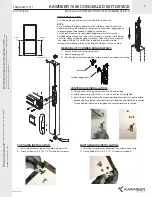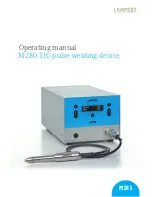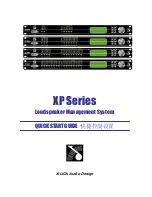
5 - Effects
Core Effects Descriptions
E-MU PCIe Digital Audio Systems
71
Flanger
A flanger is a very short delay line whose output is mixed back together with the
original sound. Mixing the original and delayed signals results in multiple frequency
cancellations known as a comb filter. Since the flanger is a type of filter, it works best
with harmonically rich sounds.
A low frequency oscillator is included to slowly change the delay time. This creates a
rich, sweeping effect as the notches move up and down across the frequency range. The
amount of feedback deepens the notches, intensifying the effect. You can invert the
feedback signal by choosing a negative feedback value. Inverting the feedback signal
creates peaks in the notch filter and deepens the effect.
Flanger
LFO
In
Out
Feedback
Delay
Waveform
Phase
Signal path = Stereo
Parameter
Description
Delay
Sets the initial delay of the flanger in .01 millisecond increments.
This parameter allows you to “tune” the flanger to a specific
frequency range. Range: .01ms to 4ms
Feedback
Controls how much signal is recirculated through the delay line
and increases resonance. Negative values can produce intense
flanging with some signals. Range 0% to 100%
LFO Rate
Sets the speed of the flanger sweep. Range: .01 Hz to 10Hz
LFO Depth
Sets how much the LFO affects the delay time. Increases the
animation and amount of the flanging effect. Range 05 to 100%
LFO Waveform
Selectable between Sine or Triangle wave.
LFO L/R Phase
Controls the stereo width by adjusting the phase difference
between the left and right sweeps. Range: -180° to +180°
















































